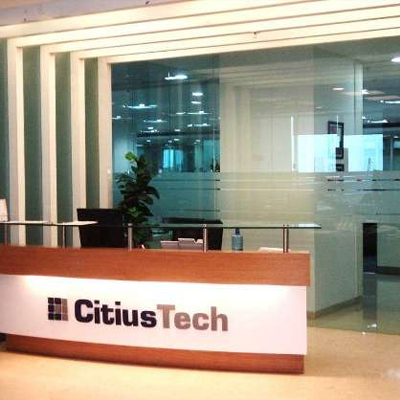Unleashing Growth through Ecosystems and Alliances

Nandakumar Moni, Senior Vice President, Ecosystems & Alliances at GlobalLogic
“If you want to go fast, go alone. If you want to go far, go together.”
You might have heard this proverb, often attributed to African origin with a path characterized by more unknowns and risk factors than traditional routes—the epitome of which is trust. Now, more than ever, we are living in uncertain times and in a world where geographical boundaries are blurred, often relegated only to political and socio-economic dividers. Technology has outpaced every other driver of growth and innovation unlike anything else and connected organizations, customers, and consumers at the click of a button. Ecosystems and Strategic Alliances play a crucial role in driving the transformational growth of industries, and even economies of nations.
Strategic alliances have been around since World War I or earlier, when countries rallied together to fight for a common goal while pooling together their resources and coordinating their efforts. More recently, successful ones, such as Spotify and Uber, Apple Pay and MasterCard, Google and Luxottica, or Vodafone India and ICICI Bank, just to name a few, have driven tremendous growth while impacting their audience at scale.
So how does one define what constitutes a strategic alliance? They are collaborative in nature, built on a foundation of trust, defined by common goal(s), and executed on a timeline and measured with robust governance. There must be mutual respect for an alliance to be strategic; otherwise, you are one among the many in an ecosystem of vendors and business partners.
The success rate of growth through strategic alliances is a dismal 20%, as per a Wharton School of the University of Pennsylvania study. Companies that invest in and follow a structured alliance management process often consistently report a better success rate with their alliances than the average, often up to 80% at times.
"Ecosystems and alliances propel innovation, open doors to new markets, and cultivate shared resilience. In a business environment where longevity outweighs speed, the harmonious collaboration of alliances orchestrates the path to success.”
Understanding Ecosystems and Alliances:
At their core, ecosystems refer to a network of interconnected organizations, often with similar or complementary capabilities, ranging from startups to large corporations, product-led to services-oriented ones. These ecosystems can be sector-specific like healthcare or can span multiple industries like a smart city, involving government, technology firms, logistics players, and utility companies.
Alliances, on the other hand, are more formal partnerships between businesses and can be of varying tenure. They can involve two or more companies and are formed to leverage synergies, share resources, and co-create value for their customers and themselves.
Why do Ecosystems and Alliances Drive Growth?
Diverse Skill Sets and Resources:
Collaborative approaches bring together diverse skill sets and resources. A tech startup might lack the infrastructure to deploy its solutions at scale, but by partnering with an established firm, it can access the necessary resources and reach.
Innovation and Co-Creation:
Alliances and ecosystems foster an environment of shared learning and innovation. When businesses come together, they bring varied perspectives and expertise, leading to the creation of new solutions and improvements to existing products while creating entry barriers for others.
Access to New Markets:
Collaborations can pave the way for businesses to enter new markets or target new customer segments. For instance, a local brand looking to go global might form an alliance with an international partner, leveraging their understanding of the foreign market.
Shared Risk and Investment:
Entering new markets or launching new products involves considerable risk and investment. Through alliances, businesses can share these burdens, making the endeavour more feasible and less risky.
Best Practices for Forming and Managing Collaborative Ventures
Aligned Objectives:
Before entering an alliance or becoming part of an ecosystem, it's crucial for businesses to ensure that their objectives align. Misalignment can lead to conflicts and hinder the collaboration's success. Each entity, while they focus on their goals MUST ask this crucial question, “What’s in it for the other person?”
Open Communication:
Transparency and open communication form the backbone of any successful partnership. All parties involved should have a clear understanding of their roles, responsibilities, and expectations.
Flexibility:
The business landscape is dynamic, and collaborations need to be agile. Partners should be open to adapting their strategies and roles based on changing circumstances and market demands.
Legal Framework:
For alliances, especially, it's essential to have a robust legal framework in place. This will detail the terms of the partnership, including resource sharing, revenue models, intellectual property rights, and exit strategies.
Solution Orientation:
Customers are seeking proven and reliable solutions that they can quickly avail, deploy, and realize value from. Co-creation of solutions only comes from the investment of time and resources, along a commitment to sustain and grow.
Continuous Monitoring and Evaluation:
Collaborations should not be set in stone. Regular evaluations can help in identifying areas of improvement and ensuring that the alliance or ecosystem is on track to meet its objectives.
Conclusion
In the age of interconnectedness and rapid technological advancement like Generative AI, silos are trending obsolete. Businesses that harness the power of ecosystems and alliances stand a better chance of thriving in this dynamic environment. By collaborating with the right partners, sharing resources, and co-creating solutions, companies can unlock unparalleled growth opportunities and navigate the complexities of the modern market.
the journey Into Industry
Nandakumar Moni is a global business executive with experience spread over 25 years through progressive leadership positions across technology alliances, enterprise sales, and marketing disciplines. He has a proven track record of exceeding booking, revenue, and profit goals, driving new customer acquisitions and high-margin growth for hardware, software, and professional services, and having gained valuable experience at companies such as IBM and Microsoft. Nandakumar is based in the US at Bellevue, a bustling city in the Pacific Northwest, and is the Senior Vice President of Ecosystems and Alliances at GlobalLogic, a Hitachi company that specializes in digital design and engineering services. He has built his career leading and influencing diverse global teams both directly and indirectly while keeping an eye on the partner and customer experience, resulting in consistent performance and exceeding business goals. As an Executive, he influences C-level business decisions & drives consensus across organization lines to create highly profitable and sustainable business relationships. Nandakumar believes in “giving back” and “paying it forward”, you can often see him supporting social causes and mentoring future leaders at b-schools.
.png)







